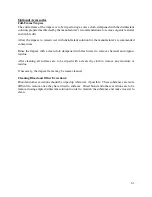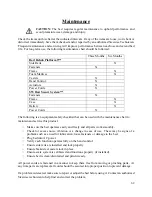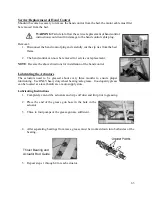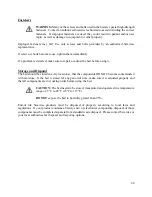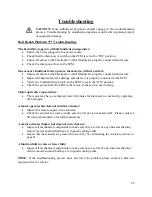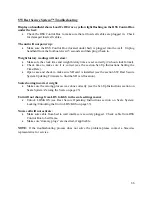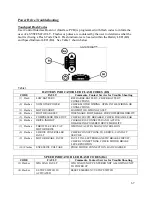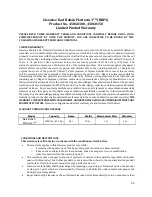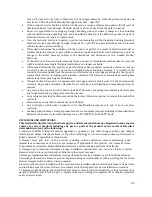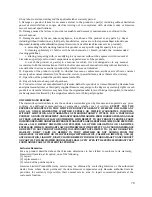
55
Pinch points are present near the casters and when the casters move as the
bed is raised or lowered.
Pinch points are also present between the side rail
and the floor.
Transport
WARNING:
During transport, use caution so the bed does not tip or overbalance.
Failure to do so could result in patient and/or user injury as well as damage to
equipment or other property.
CAUTION:
The bed needs to be stored, transported and operated in a temperature
range of -5°C to 45°C (23°F to 113°F).
DO NOT expose the bed to humidity greater than 95%.
It is not recommended to transport a patient when the bed is in the Trendelenburg or Reverse
Trendelenburg positions. When the bed is in Trendelenburg or Reverse Trendelenburg, the
position of the castors is modified to prevent movement and/or accidental tipping of the bed.
Generally, as the load increases, the risk of instability goes up.
Lower the foot section and head section to increase stability.
Lower the bed deck height approximately 15.75”-20” (40-51 cm) from the floor to increase
stability.
Use and position of accessories may affect stability. DO NOT overextend IV poles or similar
accessories and DO NOT overload accessories. If multiple accessories are in use, distribute them
evenly from side to side or head to foot.
For inclines or thresholds, approach them moving forward or backwards, rather than sideways.
To help prevent overbalance or collision with hidden objects or people, DO NOT make sharp turns
or turn the bed at high speeds.
The bed complies with the 60601 Threshold Test (21.6.102) and will go over a rectangular cross-
section 20 mm (.787”) high and 80 mm (3.15”) deep.





















